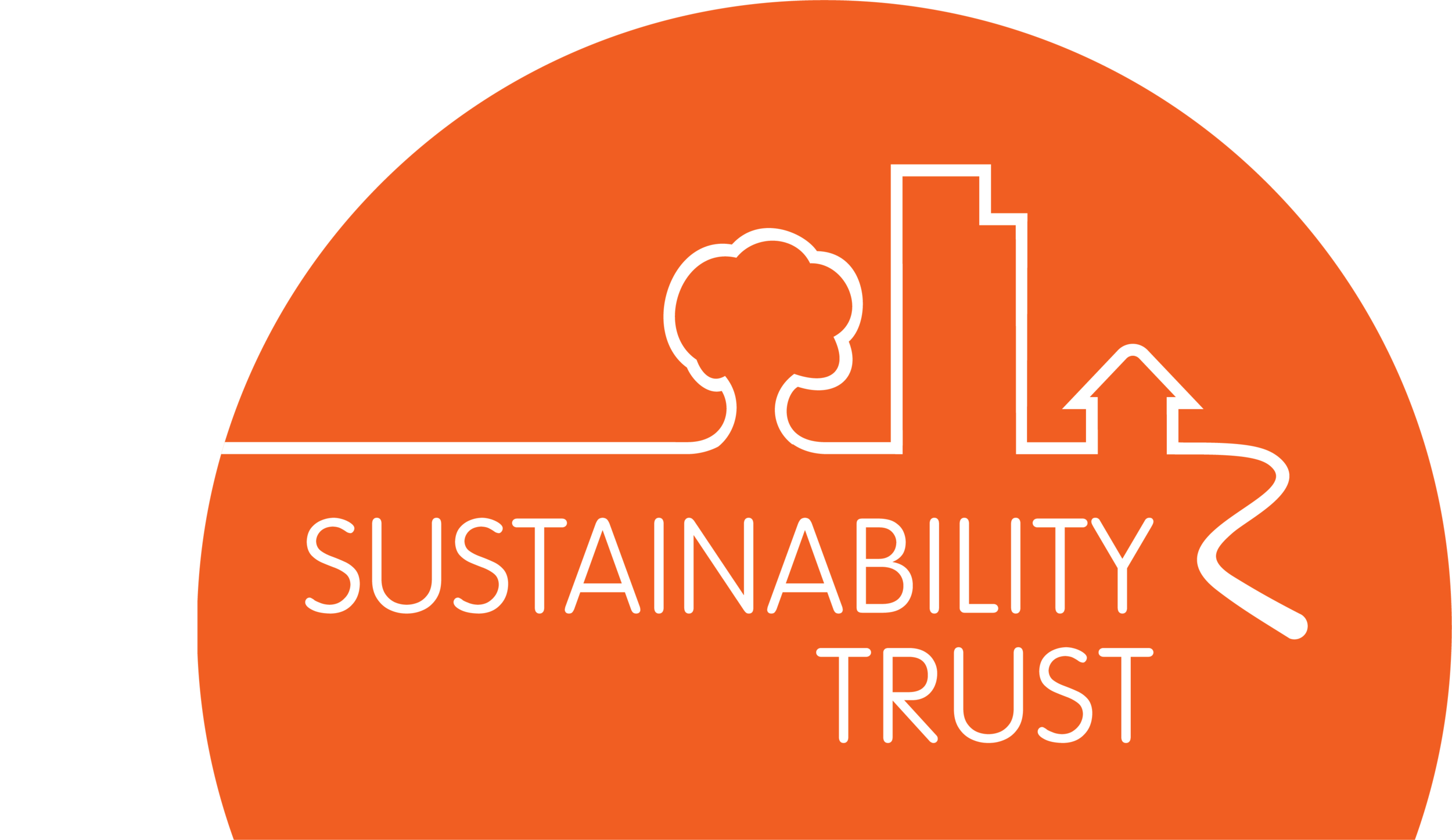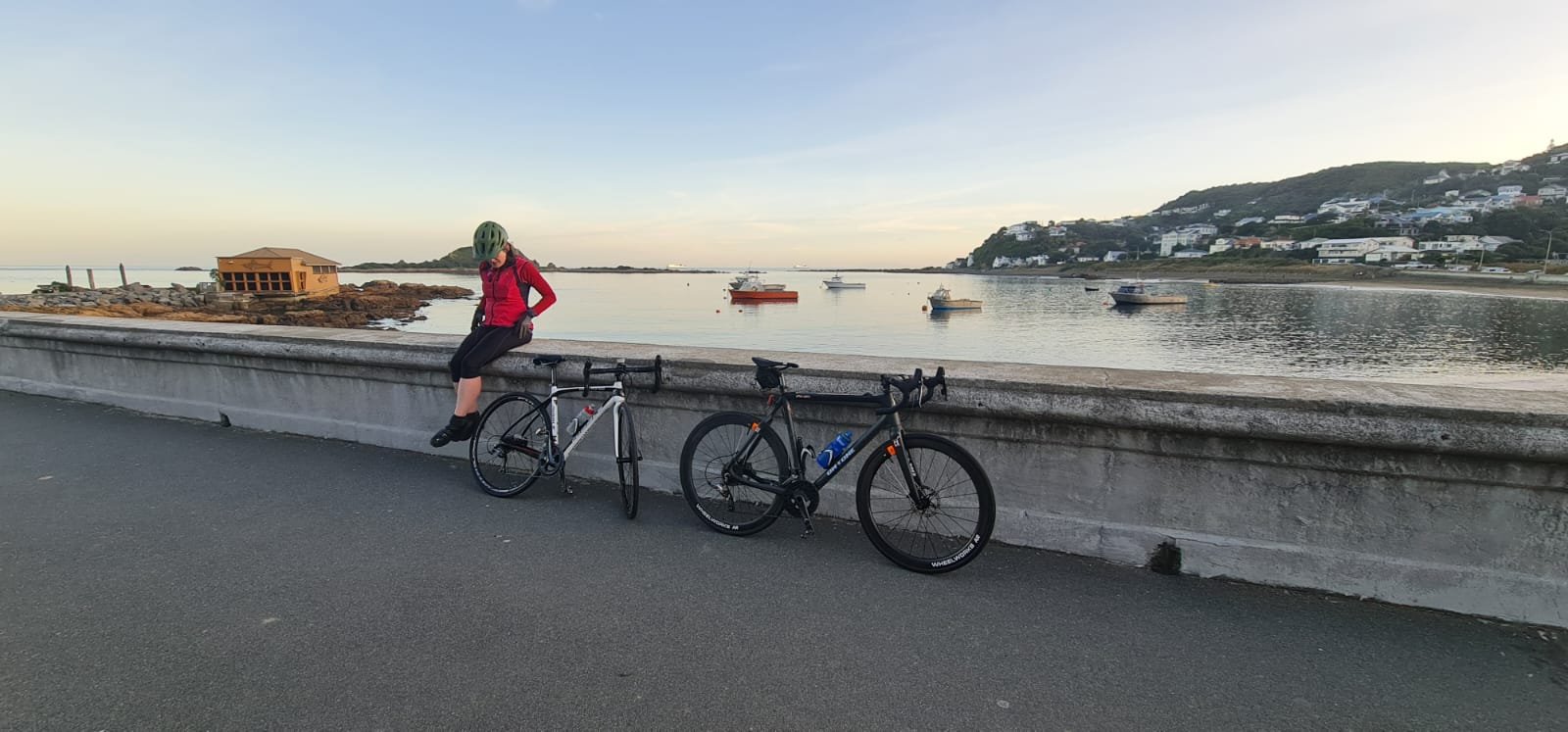Travelling Fresh
Published 21 October 2023
Travelling fresh
By Sustainability Trust’s Lisa Moore, Healthy Homes Assessor, and Polly Griffiths, Sustainability Manager
Did you know that Aotearoa New Zealand has the highest number of vehicles per person of any country in the world, more than the USA and Australia?
In our latest blog two of our staff talk about their positive experiences and frustrations of adopting a shift away from private car use in their households.
Polly with her bike in Island Bay
Globally, transport is responsible for about a quarter of overall greenhouse gas emissions, and more than two-thirds of this comes from the engines of road vehicles. The increasing use of private vehicles also causes congestion, noise pollution, and air pollution, which is one of the main global health risks humans are facing.
There have been improvements in the fuel efficiency of traditional cars, but rather than reducing emissions, this has just enabled us to travel more for the same cost and purchase bigger, heavier vehicles.
While there is a lot of emphasis on the role of electric vehicles (EVs) in tackling climate change, a bigger effort needs to go towards reducing the number of cars on the road. This is because a significant source of emissions is in the manufacture of vehicles – even EVs. Also, switching to EVs won’t help congestion, and still causes air pollution from tyres and brakes.
Lisa, one of our fantastic Healthy Homes Assessors, lives in Titahi Bay with her young son. Lisa has been trying to reduce her private car use since the start of 2023. She uses a Trust hybrid car for home visits.
Lisa’s story
I’m a great fan of public transport - It takes the weirdly angry atmosphere of driving in traffic and replaces it with a lovely quiet time to just watch the world go by. (Work if you must – but we seem to lack fold out trays and free Wi-Fi on a lot of our transport systems in NZ.)
My son and I use the train as much as we can to commute from the Porirua Station into Wellington City. Often it works – other times it is a complete disaster and we end up sitting in a traffic jam with everyone else who couldn’t take the train due to [insert operational failure here].
I also take my bike on the train occasionally. I say occasionally because if you wish to take your bike on the train, they only allow bikes on trains at times that aren’t heaving commuter peak times. The last viable ‘bikes allowed’ train in the AM run is at 7:37am – next one is 8:37am…you get the idea. When you do get on a bike allowed train there are only a few carriages that can take bikes, and then you can only get 3 bikes into each bike park section. I’ve not been able to get my bike onto a train a few times now, mostly on the early morning trips to Wellington as the bike racks can be full by the time the train gets to Porirua. And to add to the difficulty of it all – you have to strap your bike in rather haphazardly and hope that all your spokes don’t fight with other people pedals etc.
Back to Porirua in the afternoon/evening is the same and one day I missed the 4:45pm [bikes allowed] train home and decided I would just bike home rather than wait for the next [bikes allowed] train at 6pm. It takes me an hour on my sturdy e-bike to get from Wellington City to my house in Titahi Bay and that first time my bike battery ran out just as I hit the steep hill my house sits on – but by then I was just ecstatic that I did it.
Thanks to Metlink for making me fit and healthy, as I will often choose to bike rather than try my luck on the trains. Admittedly, I have a beautiful commute around 2 harbours, and yes that Ngauranga Gorge stretch is scary, but it does make you feel like a super-hero. However, flying down the Gorge on a bicycle is not going mainstream anytime soon so wouldn’t it be nice if we could all take our bikes on the trains anytime with no worries. If we could then I’m sure a lot more people would use daily public transport - which would be a win for us all!
Lisa outside the Trust during Love to Ride 2023
Polly on the Northern Explorer Train
Polly is our Sustainability Manager, and lives in Island Bay with her husband who works as a Lead Engineer at Xero. Her household has gone car ownership free since 2017.
Polly’s story
I don’t like driving so giving up a car wasn’t a biggy for me when our household was still based in Edinburgh, Scotland. I never used a car for work, I relied on my feet, the bus, the train and the occasional taxi or ride share with colleagues. If we headed out of the city for work, weekends and holidays, the train connected us to most places we wanted to go. We travelled regularly to Manchester, Bristol and London, and as far as France, Croatia, Italy and Spain without needing to fly. If we were headed to somewhere without a train station, particularly for mountain biking, we started to lift share with friends, or used the City Car Club, a car sharing scheme. We quickly found we didn’t need the car as often as we thought we did. The unexpected bonuses were cash savings and a lot less life admin, no WOF, insurance, car maintenance or car washing to worry about.
So, when we moved to Aotearoa, we decided we would stick to being car ownership free. Nothing much has changed about how I travel but my choices are more limited. First off, where to live; we restricted it somewhere close to a bus route that had regular services. I am not a confident road cyclist, so five years ago I didn’t feel safe choosing to bike to work, thankfully things are getting better and better on that front. The periods of high cancellations have left me regularly walking all the way to work or resorting to Ubers (but not something that everyone can afford). I feel very lucky that I was able to get a job in the centre of Wellington, and that we could afford to rent in Wellington; I quickly realised that big parts of the region would not be accessible to me for commuting. Mevo has been amazing, and we save up chores and bulk shopping so we make the most of having a car for a few hours.
The biggest change for me has been accepting less freedom to travel for both work and local tourism. I want to fly as little as possible. Recognising trips back to the UK will sometimes be necessary, I have been trying to keep my local flying down to a maximum of once a year. Flying less takes a bit of commitment in Aotearoa. Trains to Auckland (642km) take 11 hours, don’t run every day, there is no wifi and no power sockets. It is pretty expensive at $240 and promoted as an exclusive tourist experience. I’m used to trains which are set up to be able to work. Travelling to London from Edinburgh, the train service sells itself on being set up for commuters. It takes an average of 5h 39m, over a distance of 534 km, and there are normally 61 trains per day. Prices start at the equivalent of $55 booked in advance.
Change the System
Big improvements to infrastructure are needed; the current systems can only take us so far. Want to get involved in systems change?
Cycle Wellington – https://www.cyclewellington.org.nz/
Cycling Action Network - https://can.org.nz/
Save Our Trains - https://www.allrailways.co.nz/
Future is Rail Conference - https://www.railconference.info/
Take the Jump is a climate action movement that everyone can take part in, by trying seven shifts. Travel Fresh is the shift to using public transport, active travel (walking, cycling), and carpooling and car sharing as much as possible.
Reference: https://www.takethejump.org.nz/travel-fresh




